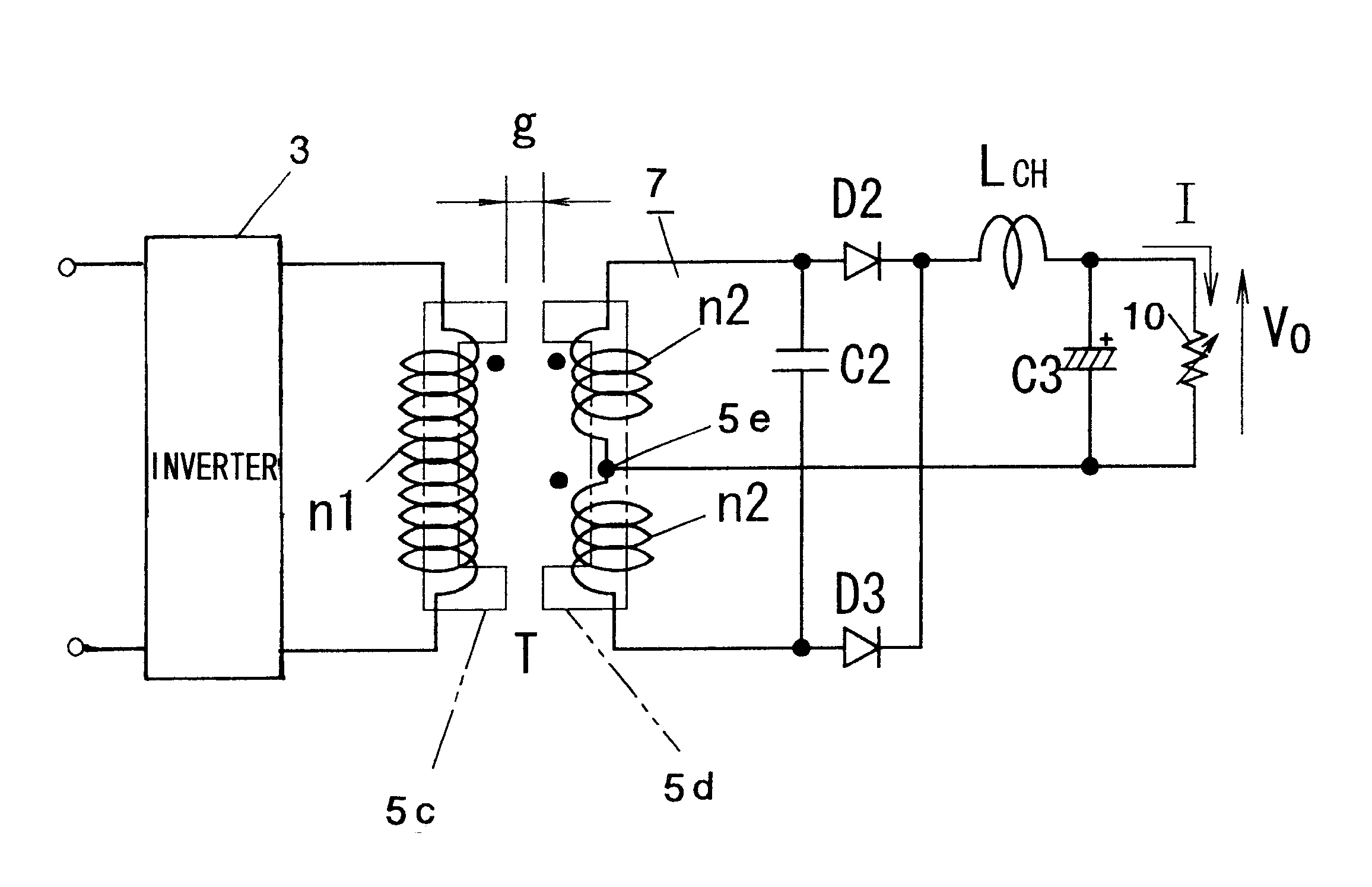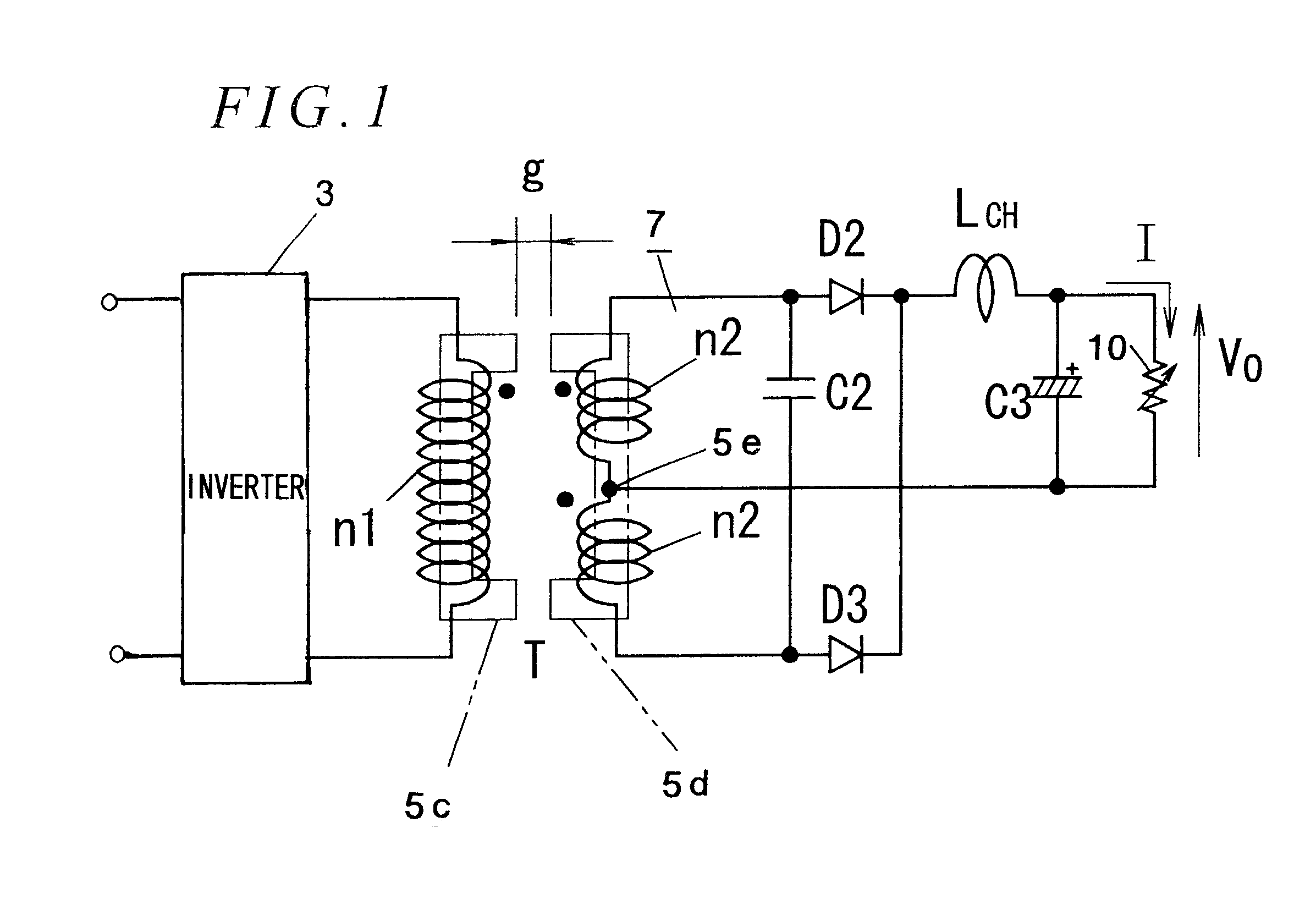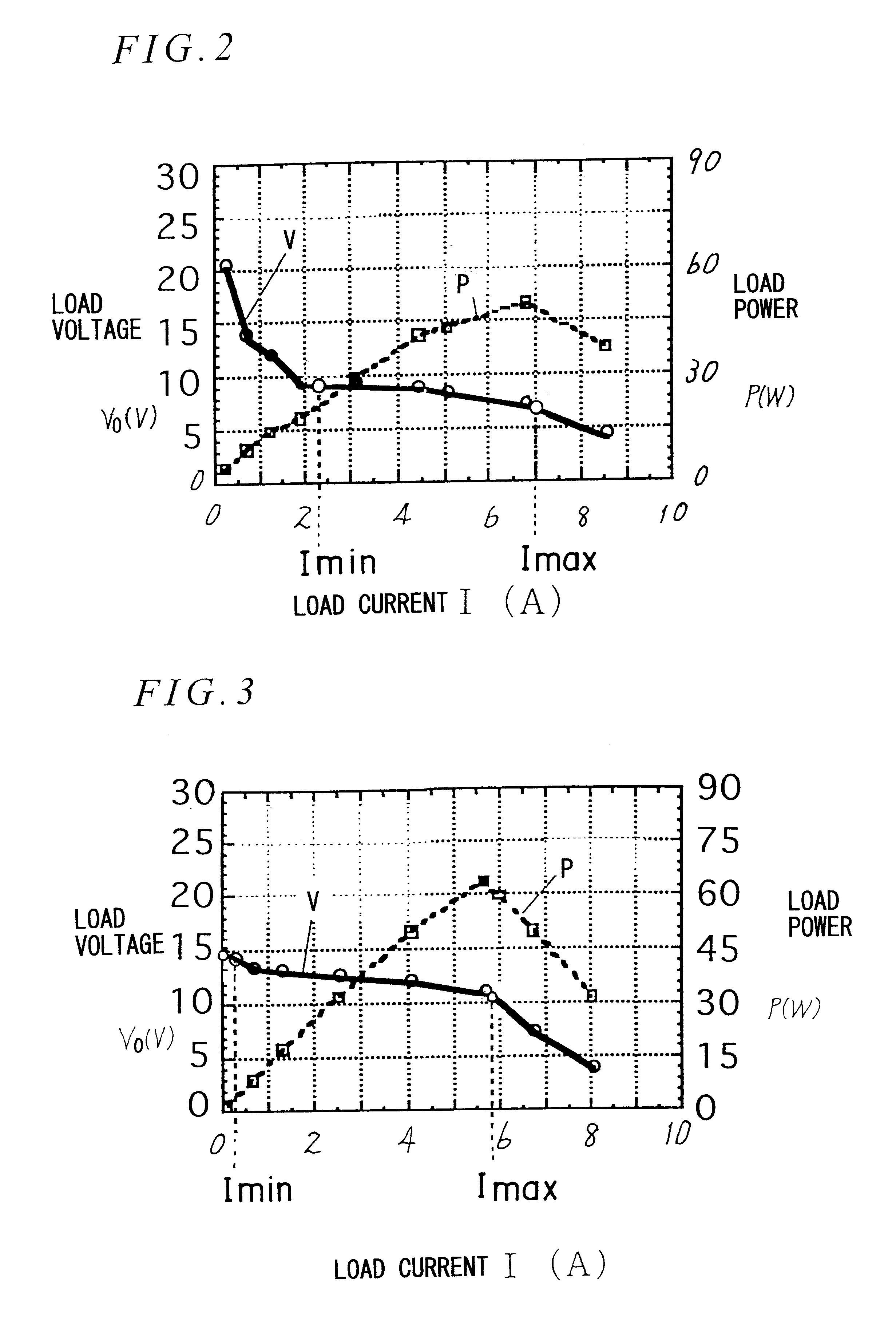Non-contact electrical power transmission system having function of making load voltage constant
a technology of non-contact electrical power transmission and load voltage, which is applied in the direction of electric variable regulation, process and machine control, instruments, etc., can solve the problems of increasing the number of parts, the load voltage v0 is remarkably low, and the cost is higher
- Summary
- Abstract
- Description
- Claims
- Application Information
AI Technical Summary
Benefits of technology
Problems solved by technology
Method used
Image
Examples
second embodiment
FIG. 7(A) shows a circuit of the non-contact electrical power transmission system in accordance with this embodiment. This non-contact electrical power transmission system has the same configuration as that of the first embodiment shown FIG. 1. However, the circuit in FIG. 7(A) differs from the circuit in FIG. 1 in that the circuit in FIG. 7(A) uses a rechargeable battery as a load 10 connected between output terminals and is utilized as charging device for recharging the rechargeable battery. Components similar to those in the first embodiment are accorded the same reference numerals to omit their explanation. Where a constant-voltage load such as the rechargeable battery is connected as a load 10, the characteristics expressing the relationship between the capacitance of the matching capacitor C2 connected parallel to the secondary winding n2 and the load current I has a trend as shown in FIG. 8. In the characteristics, the capacitance of the matching capacitor C2 when the load cu...
third embodiment
FIG. 18 shows a circuit of the non-contact electrical power transmission system in accordance with this embodiment. While the drive circuit 3 in the circuit described in the second embodiment shown in FIG. 17 is a separately-excited half-bridge type inverter, the drive circuit 3 in the non-contact electrical power transmission system of this embodiment consists of a self-excited partial oscillation converter. This embodiment does not require the provision of a separate control circuit including an oscillation circuit for turning on / off voltage-drive type switching elements S1 and S2 such as MOSFETs. The configuration of the transformer T, and the configuration of the rectifier circuit 7 for rectifying the output of the secondary winding n2 thereof are similar to those of the second embodiment.
In the drive circuit 3, the serial circuit of a pair of capacitors Ca, Cb, and the serial circuit of the switching elements S1, S2 consisting of a pair of power MOSFETs are connected parallel t...
fourth embodiment
The basic configuration of the non-contact electrical power transmission system according to this embodiment is substantially the same as that of the first and second embodiments. The system has features in that as shown in FIG. 22, it uses a push-pull type inverter as a drive circuit 3 for supplying the high-frequency AC voltage to the primary winding n1 of the separable transformer T.
PUM
 Login to View More
Login to View More Abstract
Description
Claims
Application Information
 Login to View More
Login to View More - R&D
- Intellectual Property
- Life Sciences
- Materials
- Tech Scout
- Unparalleled Data Quality
- Higher Quality Content
- 60% Fewer Hallucinations
Browse by: Latest US Patents, China's latest patents, Technical Efficacy Thesaurus, Application Domain, Technology Topic, Popular Technical Reports.
© 2025 PatSnap. All rights reserved.Legal|Privacy policy|Modern Slavery Act Transparency Statement|Sitemap|About US| Contact US: help@patsnap.com



